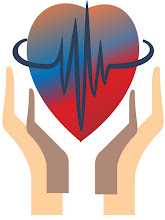Lifestyle and home remedies
By Mayo Clinic staff
For immediate self-care of a sprain or strain, try the P.R.I.C.E. approach — protection, rest, ice, compression, elevation. In most cases beyond a minor strain or sprain, you'll want your doctor and physical therapist to help you with this process:
■Protection. Immobilize the area to protect it from further injury. Use an elastic wrap, splint or sling to immobilize the area. If your injury is severe, your doctor or therapist may place a cast or brace around the affected area to protect it and instruct you on how to use a cane or crutches to help you get around, if necessary.
■Rest. Avoid activities that cause pain, swelling or discomfort. Even with some muscles out of commission, you can usually still exercise other muscles to prevent deconditioning. If you have a sprained ankle, for example, you may be able to work out on a stationary bicycle by resting your injured foot on a footrest peg, pedaling with your other leg, and working both arms. That way you still exercise three limbs and keep up your cardiovascular conditioning.
■Ice. Even if you're seeking medical help, ice the area immediately. Use an ice pack or slush bath of ice and water for 15 to 20 minutes each time and repeat every two to three hours while you're awake for the first few days following the injury. Cold reduces pain, swelling and inflammation in injured muscles, joints and connective tissues. It also may slow bleeding if a tear has occurred. If the area turns white, stop treatment immediately. This could indicate frostbite. If you have vascular disease, diabetes or decreased sensation, talk with your doctor before applying ice.
■Compression. To help stop swelling, compress the area with an elastic bandage until the swelling stops. Don't wrap it too tightly or you may hinder circulation. Begin wrapping at the end farthest from your heart. Loosen the wrap if the pain increases, the area becomes numb or swelling is occurring below the wrapped area.
■Elevation. To reduce swelling, elevate the injured area above the level of your heart, especially at night. Gravity helps reduce swelling by draining excess fluid.
Over-the-counter pain medications such as ibuprofen (Advil, Motrin, others) and acetaminophen (Tylenol, others) also can be helpful.
After the first two days, gently begin to use the injured area. You should see a gradual, progressive improvement in the joint's ability to support your weight or your ability to move without pain. Mild and moderate sprains usually heal in three to six weeks. A physical therapist can help you to maximize stability and strength of the injured joint or limb.
Tuesday, April 27, 2010
Subscribe to:
Post Comments (Atom)




No comments:
Post a Comment